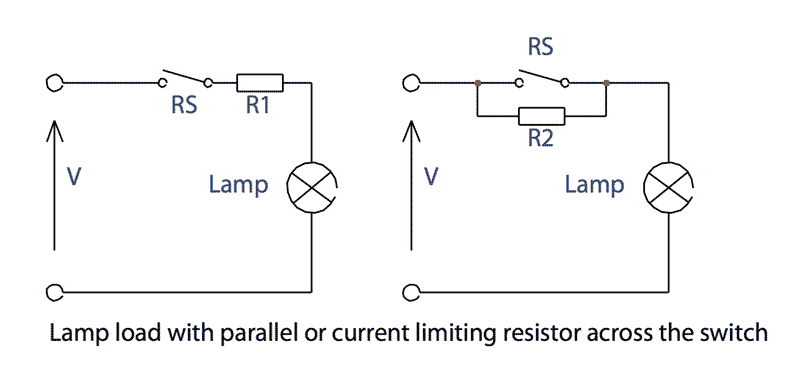Reed Switch contacts, although rugged, can require protection from certain loads
Contact Protection
Reed switches can exhibit a high degree of reliability. Their contacts are sealed in an ultra clean environment at a predetermined pressure or vacuum, specifically chosen for their intended areas of application. The contact material, the size of the switch and the mechanical form may also be developed with some particular application in mind. Reed switches can be used at low level in circuits passing pico and micro amps, with associated switch insulation resistance in the order of 10E14 if required, through to high voltage versions capable of switching 15kV or power versions that can handle several amps. Careful attention should be paid to the manufacturers’ published technical literature, to ensure the correct switch type and sensitivity range within that switch type is selected. It is assumed, in this application note, that the most suitable switch has been selected for the intended application and that the remaining problems are associated with the external factors that influence switch life, particularly external load applications.
Capacitive loads: Long wires
Capacitance across a reed switch can dramatically reduce life and even cause early contact sticking. This can occur even with low values of capacitance associated with circuit wiring. Damaging current surges occur at make or closure, in capacitive circuits, that will exceed the rating of the contact. Measures should be taken to reduce the inrush current to a minimum. The most common solution is to fit a resistor in series with the switch.

Lamp Loads
It is important to note, with lamp loads, that cold filaments have a resistance approximately 10 times smaller than already glowing filaments. This means that, when turned on, the lamp filament draws a current 10 times greater than when hot. This high inrush current can be reduced to an acceptable level, through the use of a current limiting resistor in series with the switch.

Inductive Loads: Relays, Solenoids and Motors
Many applications involve interfacing the main load through a relay system, in order to handle larger values of voltage or current. Coil operated relays or solenoid control valves possess considerable inductive values. The significant factor to guard against is the release of energy, temporarily stored in the coil, at the time the reed switch opens. The collapsing magnetic field, when an inductive circuit is broken, causes a voltage transient or back EMF. This will eventually lead to complete welding of the switch.
There is a choice of devices that can be used for contact suppression that includes diodes, RC snubber circuit, metal oxide varistors or transient voltage suppression diode. The two most common methods of suppression are diode and RC (resistor capacitor) suppression.
Diode suppression (DC circuits only)
The diode is excellent for removing the inductive voltage spike, as the back EMF is directed through the diode. Contact erosion is reduced to a minimum but, when placed across a relay coil, release time of the relay contacts will be increased by several milliseconds while the stored energy is being dissipated. The diode chosen must have a forward current rating equal to, or greater than, the steady state current of the circuit and the diode must be connected cathode to positive.
RC suppression
RC suppression can be used of AC or DC circuits. The associated release time of the RC suppressed relay contacts is faster, although not so efficient in removing the inductive transient. The calculated value of R must be checked, to ensure that the capacitive surge is reduced to a safe value for the type of switch in question. A resistor and capacitor, connected in parallel with the switch, as shown below, is recommended. Transient voltage suppressors or varistors may also be used to dissipate the transient and protect the contacts.
Motors
The circuit can appear as a high inductance and low resistance, at the moment of switch closure. Surge current during starting could be some 5 to 15 times the steady value and, depending on the type of motor and starting characteristics, could last for several seconds in the worst case.
The nomagraph below can be used to calculate the RC values requied to achieve the necessary contact protection.
